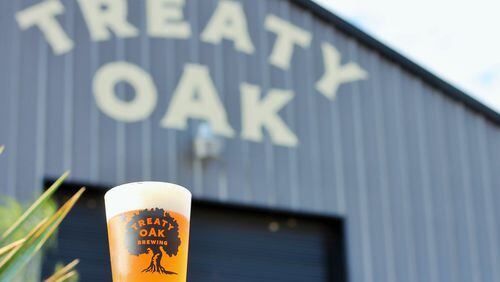Dorie Greenspan has some unconventional advice for the nervous cookie bakers out there: Don’t worry so much.
In the attempt to make a perfect cookie, so many of us fret about getting the baking time exactly right or using the very best equipment or weighing ingredients. But baking doesn’t require nearly as much precision or cooking savvy as you might think.
“Cooking involves endless judgment calls, but with baking, you simply follow the recipe,” Greenspan says. “You don’t have to worry so much because the person who created the recipe worried about that for you.”
Greenspan, who lived in Paris for a number of years but is now based in Connecticut, says there are some cookie-baking skills that bakers should acquire, such as not letting your butter get too warm (“room temperature” butter is actually cooler than the temperature of the room) or using a cookie rack to cool the cookies so they don’t stick to the sheet.
But many of the other "rules" aren't really rules, even the ones about measuring flour. When working on her most recent book, "Dorie's Cookies" (Houghton Mifflin Harcourt, $35), she and her recipe tester, Mary Dodd, were using two different sets of measuring cups, and when they compared the volumes, the cup measurements were not exact. They baked a bunch of recipes with small variations, by weight, in the amount of flour and found that they weren't that different.
“When we finished the experiment, besides being totally crazy, we had this aha moment. For all the talk about precision and exactitude with measurement, baking is very forgiving,” she says. The same was true with baking times and oven temperatures. They tested a batch of cookies and adjusted the baking time of each batch by one minute, from 8 to 19 minutes. At 14 minutes, they were perfect for Greenspan’s taste, but her assistant preferred another length. “Even at 19 minutes, somebody would have liked them.”
Greenspan’s oven cycles on and off to maintain the temperature, but those 20-40 degree swings might not happen in yours. “And yet, you’re going to bake the cookies and I’m going to bake the cookies and we’re both going to be happy. There’s room for variation,” she says
Let’s go back to that butter, though. “If you’ve lost the shoulders on your butter, it’s gone too far,” she says. Too cool is actually better than too warm because the butter will heat up when you mix it with the sugar. When you take the butter out of the fridge to warm up, take the eggs out, too. Slice the butter so it will warm up faster and then measure your other ingredients. By the time you’re ready to start the heavy mixing, the ingredients should be close to the temperature you’d like them: soft enough to cream together, but not warm enough for the fat to melt.
Don’t mess with sifting the ingredients, unless you’re using powdered sugar or cocoa. Whisking the dry ingredients together is sufficient. Over the years, Greenspan has started to add the salt to the butter and sugar so that the grains mix in more evenly and the cookies have salt throughout them.
Another big change she’s made: “Recipes used to say, ‘Add in the dry mixture in two or three additions and stir,’ and then the recipe would say, ‘But don’t overbeat,’” she says. If you follow that, the first portion of flour is whirring around in the mixer and getting close to being overmixed, so now she adds all of the flour mixture at once and pulses the mixer a few times so the flour doesn’t fly everywhere. Once the flour has started to incorporate, she continues to blend until well combined.
The third major change she’s made is how she rolls out dough. “We were taught to form the dough into a disc, put in fridge and let the gluten relax, but the dough is so hard that you have to wait for it to get softer,” she says. “It occurred to me that the dough didn’t care when it got put in the fridge. It needed to be there, but why not after it’s rolled out?”
She now rolls out the dough right after it has been mixed. “You have to roll it between parchment or wax or else it’s a mess on the counter, but the dough rolls out so easily, you could roll it out with a jar of pickles,” she says.
She’ll then place the flat circle of dough on a baking sheet or cutting board and then put it in the freezer or fridge until it’s cold enough to make cut-out cookies.
About that baking sheet: What kind does she use? Not the insulated baking sheets that were created so that you’ll never burn your cookies. They don’t allow the bottom of the cookie to caramelize and get the texture she wants. She used to use cookie sheets with a rim on one side, but now she sticks with half sheet pans lined with parchment paper or a silicone baking mat.
The only other tools she recommends are a few sizes of cookie scoops so that your cookies are uniform and cook evenly and a thin, offset metal spatula — the kind you’d use in a diner to flip hamburgers — to remove the cookie from the sheet.
Cookies are the ultimate shareable gift. You can make a batch and bring a lot of joy to a lot of people, and she's trying to encourage that kind of kindness through a hashtag campaign called #cookiesandkindness. Bakers around the world can tag their Instagram photos with that hashtag anytime they are baking for the benefit of someone else. Each week, Greenspan features some of the cookies on her blog at doriegreenspan.com.
She's also encouraging bakers to join her in raising money for Cookies for Kids Cancer, which funds research into treatment for pediatric cancer. The nonprofit has granted more than $10 million to research, and the majority of that money has come from bake sales. You can find out more about the organization at cookiesforkidscancer.org.
NEW BEER
Treaty Oak Brewing & Distilling officially unveils beer program
Although visitors to Treaty Oak Brewing & Distilling ranch in the Hill Country have seen house beers on the menu for some months now, the brewmaster hadn't been ready to launch the beers more widely. That's changing this week: Treaty Oak has perfected the recipes and is sending three core brews into local bars and restaurants.
Chris Lamb, formerly the head distiller, started learning a new skill last year when owner Daniel Barnes decided it was time for Treaty Oak to expand its boozy horizons. The distillery, now 10 years old, had moved onto 27 acres and had the room for trying something new. But Lamb didn't expect he would dive full-force into the project so quickly.
“Daniel originally proposed the idea of a seven-barrel system but then goes off and orders a 30-barrel system. Totally different monster,” he said. “Because we started on a 30-barrel system right away, we had to do lots of trial and error and experimenting to get things right.”
But unlike many other breweries going through rough starts, Treaty Oak has a couple of advantages. Fermentation, a process key to beer-making, is also a primary step in the distillation of Treaty Oak’s spirits — something the distillers have been doing in some form for a decade.
Plus, Treaty Oak has a full-fledged tasting room where visitors have been sipping on cocktails made from the distillery’s vodka, gin, rum and whiskey. Lamb was able to put the beers he was testing on draft at the rickhouse to get feedback. He would read reviews on the app Untapped, he said, and ask the bartenders what customers thought. And he would tweak and change and fret.
Now, the beers have met even his high standards. Treaty Oak is debuting the beer program with the Bright Side Blonde Ale, the Lil’ Hop Session IPA and the Fitzhugh Ale, a British mild. Each one is sessionable and balanced between each of the ingredients.
Eventually, Treaty Oak will be able to make the equivalent of 27,500 cases of beer a year — probably more, with the addition of two coming fermenters. Although the three mainstays are on draft only for now, the brewery is hoping to release them in cans in March. Other brews are also in the works, but Lamb’s focus on the first three means he can scarcely fathom new styles at the moment.
“Once we get our feet underneath us, we will definitely do seasonals,” Lamb said. “Maybe a saison, maybe a maibock in the spring. It’s so early to say. But once we have details ironed out on the production side, I can slip away and do all these experimental things, which I really want to do.”
— Arianna Auber
About the Author






